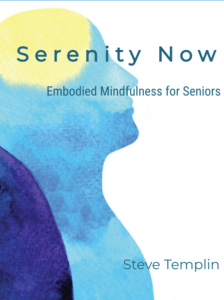‘Give me some space, man!’ is a familiar refrain suggesting that we intuitively know what mindbody researchers are confirming.
Researchers at the University of Arizona’s Center for Integrative Medicine are showing that space, or the lack of space, affects our health. You can read more about this research in this linked article.
Their work is demonstrating that being in nature or viewing natural scenes has a positive influence on heart rate variability. That’s the same heart rate measurement that I use in the office. It shows our ability to relieve the stress response and balance the autonomic nervous system.
An obvious example is that we instinctively know that a walk in the park is conducive to relieving stress, while time spent in an MRI tube, or a small work cubicle, isn’t.
We Need Space: Inner and Outer
I find it very interesting that the perception of inner space has the same stress reducing influence as the perception of space in our outer environment.
Dr. Les Fehme’s work at Princeton shows that perceiving space in our body was stress reducing and brainwave enhancing. For example, instead of noticing your heart, your could notice that space in your chest where your heart resides.
I’ve been using Dr. Fehme’s ‘Open Focus’ technique of noticing space for years and can confirm it’s beneficial influence.
The simple shift in perception from noticing a ‘thing’ to noticing the ‘space’ in or around the thing, produces significant and measurable changes in brain function and autonomic activity.
Stress Relief: Space to the Rescue
Here are a couple simple suggestions for putting the perception of space into action.
- If you’re stuck inside, literally or metaphorically, periodically look out a window into the distance, and take one or two slow breaths. If you don’t have a window close your eyes, create a pleasant outdoor scene and take the slow breath (5-6 seconds in, 5-6 seconds out).
- Close your eyes and notice a body part. For example, you can notice your right hand. Tune into the volume of space that your right hand occupies. Notice whatever feelings and sensations go with the experience of the space in and around your right hand, while you take one or two long, slow breaths.
These simple exercises can be a good start to interrupting the stress response and supporting you in becoming more resilient and resourceful.
These exercises are real medicine. They create a more synchronous brainwave state while having a balancing influence on the autonomic nervous system. That’s the aspect of the nervous system that is responsible for your overall health and well-being.
Some of the benefits of these biological shifts are reduced muscle tension, reduced inflammatory signaling, and better cognitive performance and emotional balance.

 Steve is a retired Doctor of Oriental Medicine, Acupuncture Physician, and HeartMath Trauma-Sensitive Certified Practitioner with over 35 years of clinical experience in the fields of Energy Medicine, Energy Psychology, and Biofeedback.
Steve is a retired Doctor of Oriental Medicine, Acupuncture Physician, and HeartMath Trauma-Sensitive Certified Practitioner with over 35 years of clinical experience in the fields of Energy Medicine, Energy Psychology, and Biofeedback. 